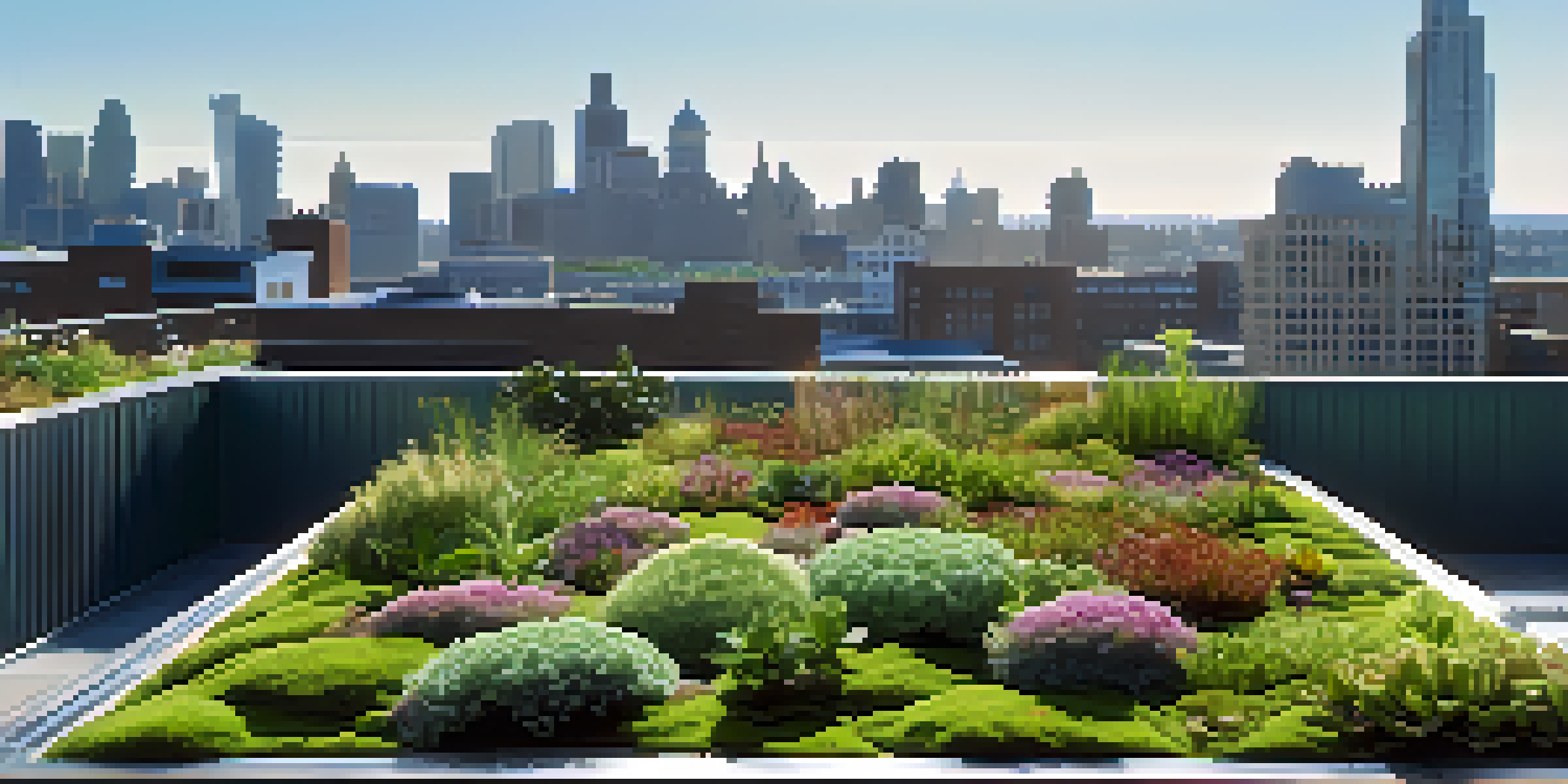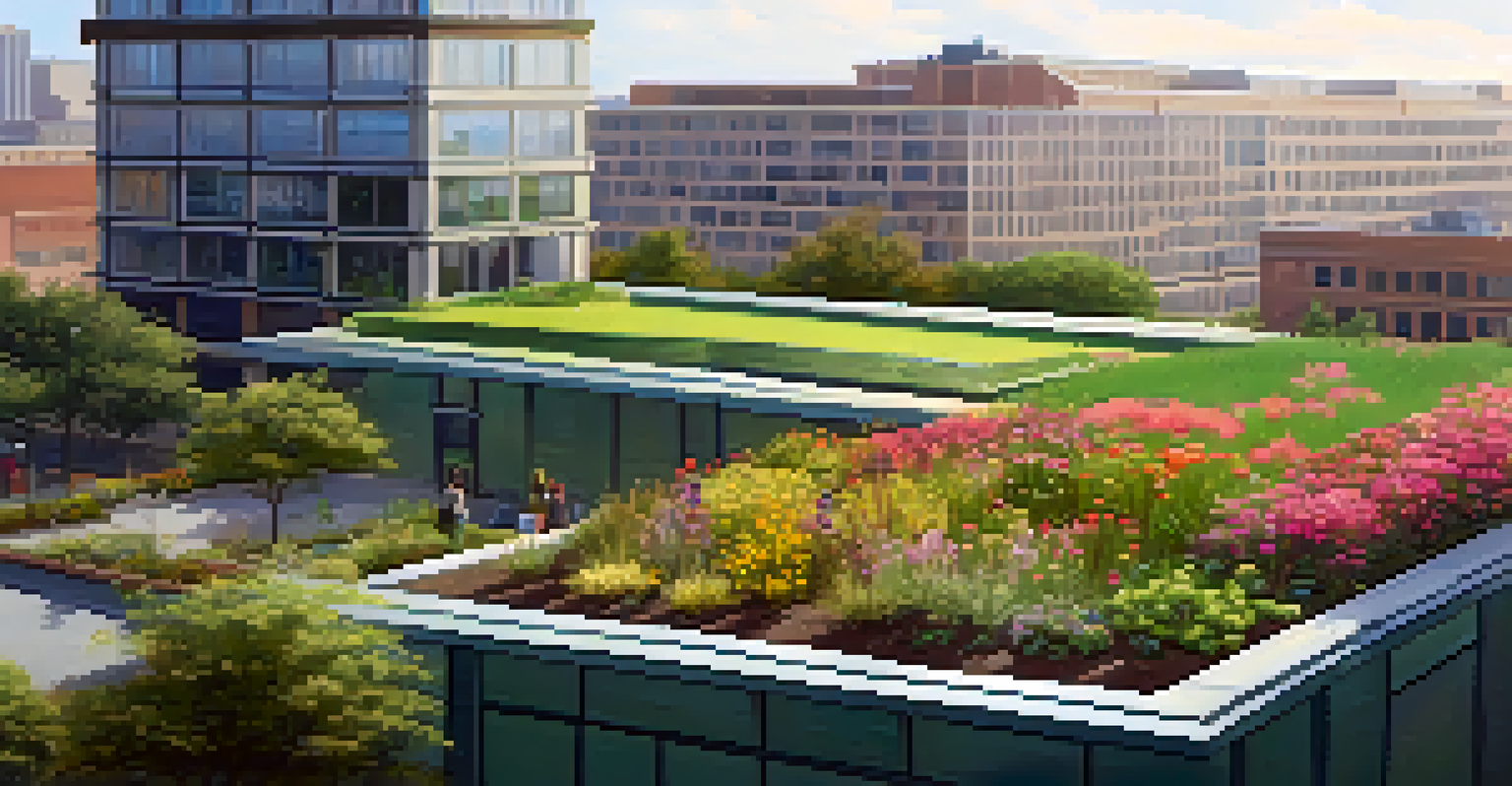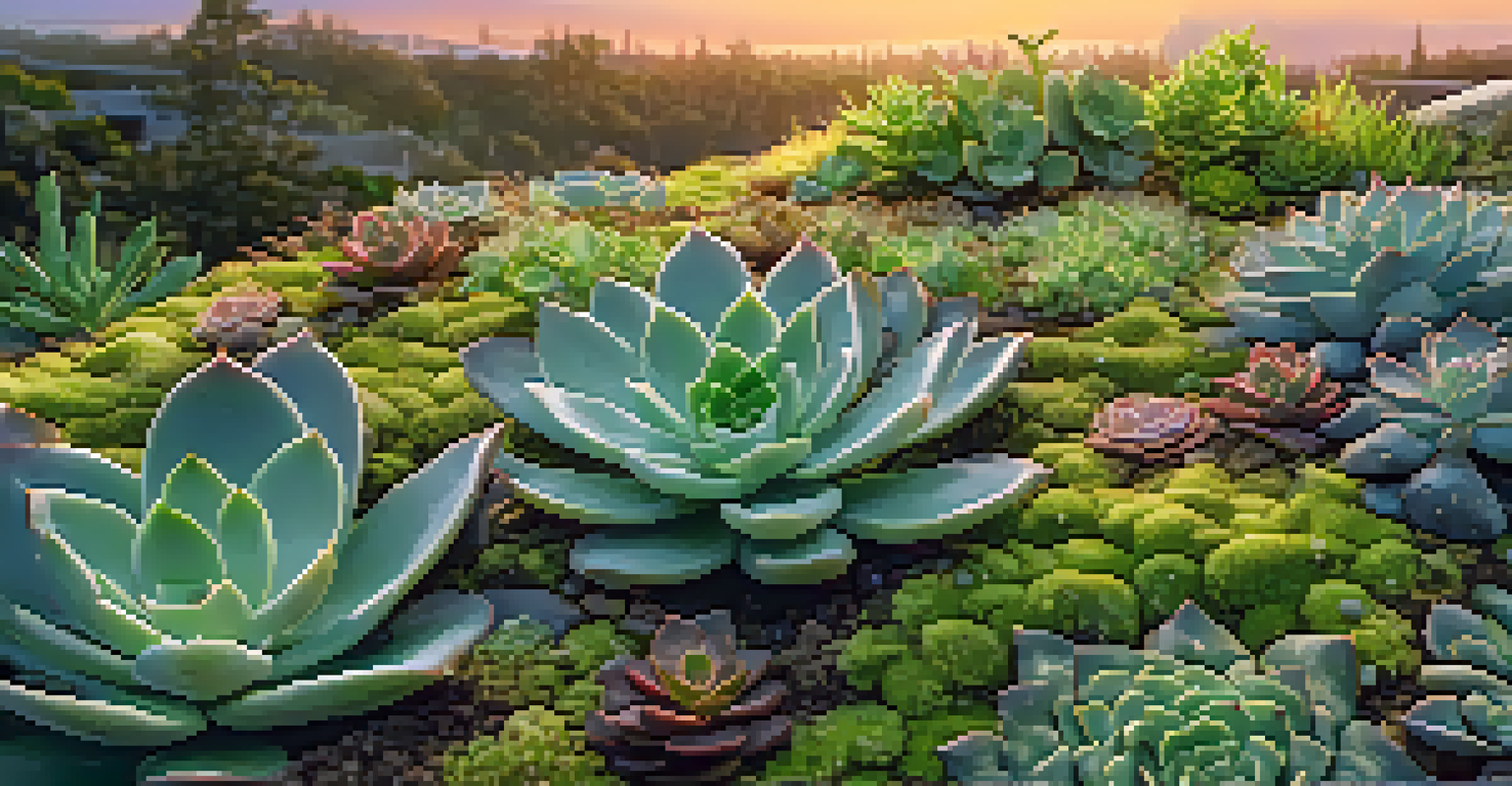The Role of Green Roofs in Sustainable Building Design

Understanding Green Roofs and Their Benefits
Green roofs, essentially gardens on rooftops, are designed to support vegetation while providing insulation. They play a vital role in enhancing urban biodiversity by creating habitats for various species. Beyond aesthetics, these roofs help to mitigate urban heat islands, making cities cooler and more pleasant.
Green roofs are not just a trend; they are a solution to the urban heat island effect and contribute to the overall sustainability of our cities.
In addition to their ecological benefits, green roofs offer financial advantages. They can reduce energy costs by insulating buildings, leading to lower heating and cooling expenses. Furthermore, they can extend the lifespan of a roof by protecting it from harsh weather conditions.
One of the most compelling benefits of green roofs is their role in stormwater management. They absorb and slow down rainwater runoff, reducing the risk of flooding and easing pressure on urban drainage systems. This not only helps in maintaining water quality but also supports the overall sustainability of urban environments.
Types of Green Roofs: Extensive vs. Intensive
Green roofs can be broadly categorized into two types: extensive and intensive. Extensive green roofs are lighter, require minimal maintenance, and typically support low-growing plants like sedums and mosses. They are ideal for buildings where weight and maintenance are concerns.

In contrast, intensive green roofs are more like traditional gardens, capable of supporting a wider variety of plants, including shrubs and small trees. However, they require more structural support, soil depth, and ongoing maintenance. This type is often chosen for public spaces and recreational areas.
Green Roofs Enhance Urban Biodiversity
Green roofs create habitats for various species, contributing to urban biodiversity and improving environmental health.
Choosing between extensive and intensive green roofs depends on various factors, including the building’s purpose, budget, and the desired aesthetic. Both types contribute to sustainability, but understanding their differences helps in making an informed decision.
The Environmental Impact of Green Roofs
Green roofs significantly improve air quality by filtering pollutants and absorbing carbon dioxide. Plants play an essential role in this process, acting as natural air purifiers. In urban areas where air pollution is a concern, these roofs are a powerful tool for creating healthier environments.
The future of urban living lies in the integration of nature within our built environments.
Additionally, green roofs help in regulating temperature, which is crucial for combating climate change. By absorbing sunlight and reducing the heat that buildings emit, they contribute to cooler cityscapes. This cooling effect can lower the demand for air conditioning, further reducing energy consumption.
Another critical environmental impact is the increase in urban biodiversity. Green roofs serve as valuable green spaces for birds, insects, and other wildlife, promoting ecological balance in densely populated areas. They can act as stepping stones for species migration and help preserve local flora and fauna.
Economic Advantages of Implementing Green Roofs
Investing in green roofs can lead to significant cost savings in the long run. By improving insulation, they can lower energy bills, which is particularly beneficial for commercial buildings with high energy demands. This cost-effectiveness makes them an attractive option for developers and building owners.
Moreover, green roofs can increase property values. Buildings with green roofs are often seen as more desirable due to their eco-friendliness and aesthetic appeal. In a competitive real estate market, this can give properties a vital edge.
Economic Benefits of Green Roofs
Investing in green roofs can lead to lower energy costs and increased property values, making them financially attractive.
In some regions, governments offer incentives for green building practices, including grants or tax breaks for installing green roofs. These financial incentives can help offset installation costs, making it easier for property owners to embrace sustainable practices.
Challenges of Implementing Green Roofs
While the benefits of green roofs are compelling, they also come with challenges. One major concern is the initial installation cost, which can be significantly higher than traditional roofing. However, this investment can pay off over time through energy savings and increased property value.
Maintenance is another crucial aspect to consider. Unlike conventional roofs, green roofs require regular care to ensure plants thrive and systems function properly. This ongoing maintenance might involve watering, weeding, and replacing dead plants, which can be daunting for some property owners.
Furthermore, structural concerns must be addressed before installation. Buildings need to be assessed for their ability to support the additional weight of soil and plants. Engaging with professionals who understand these requirements is essential for a successful green roof project.
Case Studies: Successful Green Roof Projects
Many cities around the world have embraced green roofs, showcasing their potential. For instance, the Bosco Verticale in Milan features residential towers adorned with greenery, creating a stunning visual impact while promoting biodiversity. This project has set a benchmark for integrating nature into urban design.
Another notable example is the Chicago City Hall green roof, which has become a model for sustainable city planning. The roof hosts numerous plants and provides a habitat for wildlife while significantly reducing energy costs for the city. This initiative has inspired other municipalities to adopt similar practices.
Challenges of Green Roof Implementation
Despite their benefits, green roofs face challenges such as high initial costs and ongoing maintenance requirements.
These case studies not only highlight the aesthetic and environmental benefits of green roofs but also demonstrate their feasibility in various settings. They serve as inspiration for future projects, showing that with creativity and commitment, green roofs can transform urban landscapes.
The Future of Green Roofs in Urban Planning
As urbanization continues to rise, the role of green roofs in sustainable building design becomes increasingly vital. Cities are recognizing the need for green spaces to combat environmental challenges and improve residents' quality of life. Green roofs are emerging as a key solution in this regard.
Innovations in technology and design are making green roofs more accessible and efficient. Advances in lightweight materials and automated irrigation systems are reducing installation costs and maintenance efforts. This evolution is paving the way for a broader acceptance of green roofs in urban planning.

Looking ahead, integrating green roofs into city regulations and building codes could promote more sustainable development. By setting standards for green roofs, cities can encourage builders and architects to prioritize environmentally friendly designs, ultimately leading to healthier urban environments.